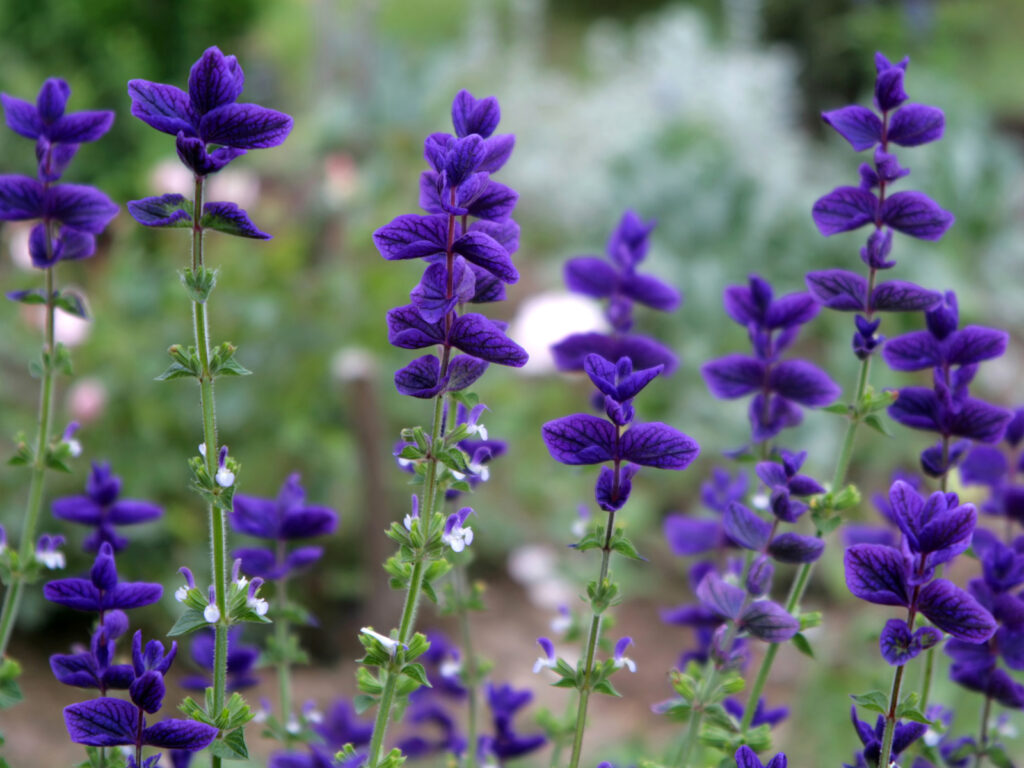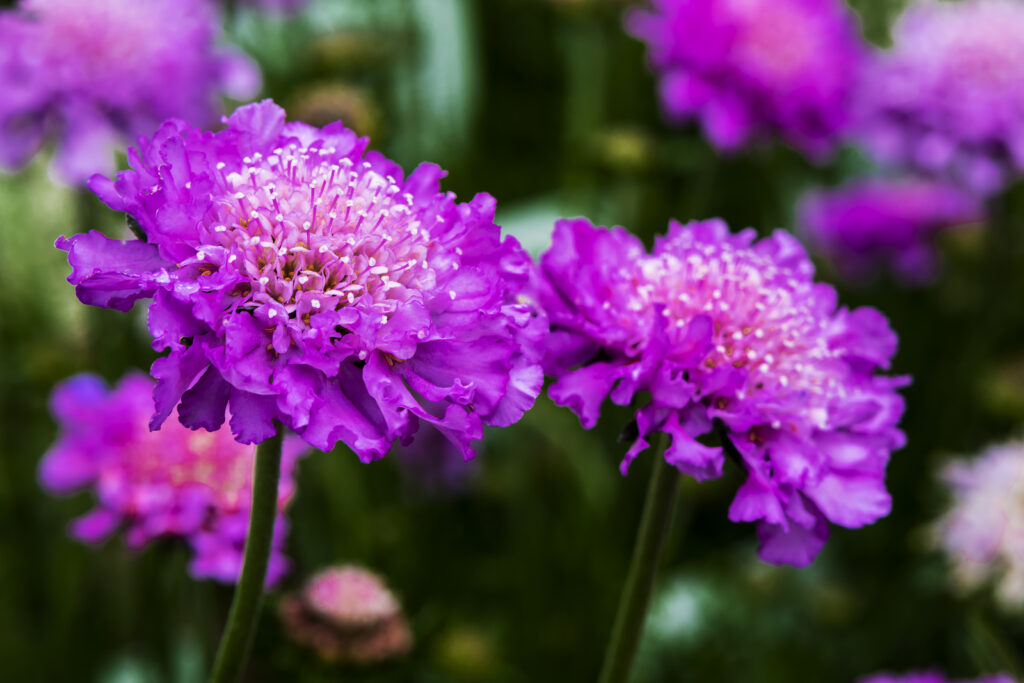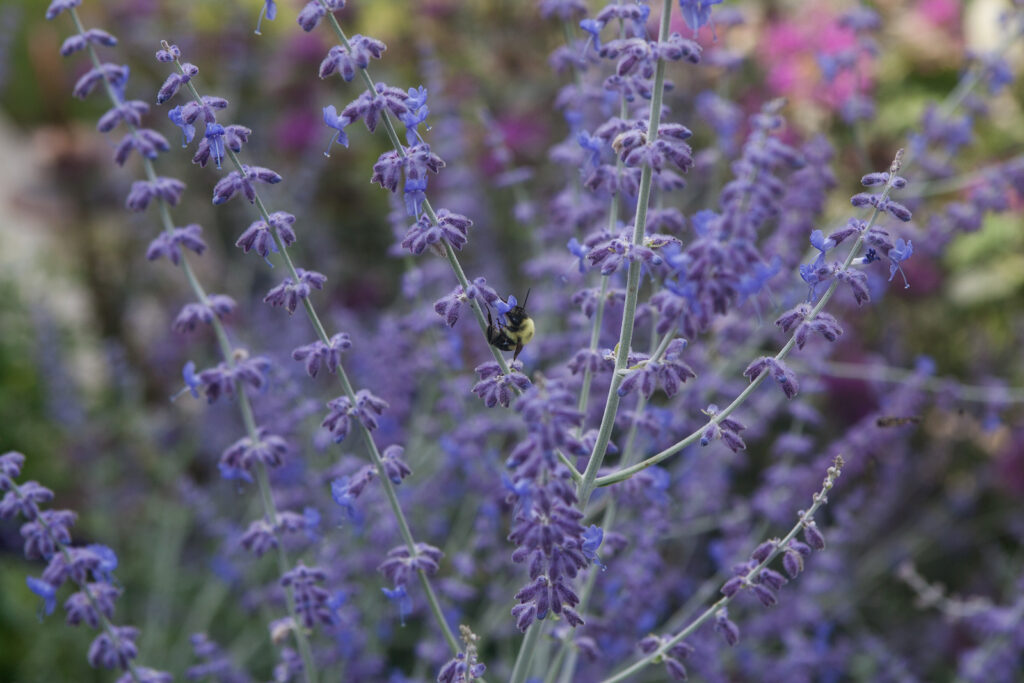Perennials flowers might be considered the backbone of the herbaceous flower garden. They are long stayers in the flower garden—commonly three to five years, sometimes more.
Perennial flowers, more than annuals, offer height and breadth and usually a longer season of color that will repeat next year and the year after.
Perennials are usually the first plants added to the flower border or bed. Annuals commonly grow at the feet of perennials or are tucked in to open spots.

Perennials and biennials
Perennials are plants that commonly live for three to five seasons. Annuals are plants that live for one growing season or year. A few plants are biennials; a biennial takes two years to flower; it commonly grows foliage in the first year, may die back in winter, then regrows foliage at the start of its second year, then goes on to flower, and then dies at the end of its second year.
Biennials are sometimes treated as perennials in flower garden designs because they take space in the garden for more than a season or year like annuals.
Some biennials don’t follow the biennial playbook; foxgloves and hollyhocks are biennials that commonly flower in both the first and second years of their lives. Many gardeners treat them as perennials.

How to choose a perennial
Here are a few tips for selecting perennials:
• Overall attributes. Know how the perennial will fit into your flower garden design. Are you choosing the plant for its flower color, its height or breadth at maturity, because it grows well in the sun or shade? These are important first considerations.
• Flower color. Flower garden design commonly revolves around blossom colors. Get familiar with the color wheel to know which colors are complementary and which are contrasting. Flowers come in all color shades and tints. How will the flowers you plant “relate” to one another? How will individual plants enhance the design?
• Bloom time. Know when the perennial blooms. Is the plant an early bloomer, a late bloomer, a short bloomer, or a long bloomer? Some perennials provide a long season of color, some bloom early or late when other perennials are not blooming. Of course, you will have flower color in mind when setting perennials into a garden design.
• Consider foliage color and texture. Perennials are not in bloom all season long. Foliage color and texture can add interest to a garden design especially when plants aren’t blooming. Will foliage color and texture add interest to the garden? Like flower color, leaf color, and texture commonly vary in considered planting design.
• Rate of growth. How quickly will the perennial reach full size? Always set plants in the garden with the mature size in mind. If you know how quickly a plant grows to maturity, you may be able to save money by buying a perennial in a 4-inch pot because it grows quickly to maturity. Gallon and two- and three-gallon plants are always more expensive, but also nearer to maturity.
• Healthy plants. Choose perennials that are healthy and full in color in size, not leggy or spindly, or with pale or yellow leaves. Look at the bottom of the container to see if roots are growing through the drain hole; these plants may be root bound. Don’t be afraid to gently slide a plant out of its pot to check the roots; healthy roots will be off white and should be visible; unhealthy roots will be brown and may grow in circles around the inside perimeter of the pot. Plant without sufficient roots may crumble in your hand.

Using perennials in design
Here are a few tips for using perennials in your garden design:
• Bloom time. Know when the perennial blooms and for how long. Bloom-time length is important when planting for color. Short bloomers can be matched with long bloomers. Plant for a succession of blooms in order to have a full season of color.
• Deadhead. Trimming away spent blooms is known as deadheading. Deadheading encourages a plant to bloom again. Deadheading is a way to keep plants blooming for a full season.
• Cutting back. Perennials with close clusters of blooms are difficult to deadhead. Instead of deadheading these plants can be sheared or cut back, flowers, and some foliage is removed. Cutting plants back can result in a new flush of both foliage and blooms. Shearing perennials back is also a way of thwarting some pests and diseases.

Long-blooming perennials
Here are some perennials that have long blooming periods:
- Aster, especially ‘Moench’, ‘September Ruby’, and ‘Wonder of Staffa’
- Balloon flower, Platycodon grandifloras
- Black-eyed Susan, Rudbeckia fulgida, especially ‘Goldstrum’
- Blanket flower, Gaillardia x grandiflora
- Catmint, Nepeta, especially ‘Dropmore’ and ‘Six Hill Giant’
- Daylily, Hemerocallis spp., especially ‘Stella de Oro’, ‘Happy Returns’, and ‘Lemon Lollipop’
- Bleeding heart, Dicentra eximia
- Garden phlox, Phlox paniculata, especially ‘Eva Cullum’ and ‘Franz Schubert’
- Goldenstar, Chrysogonum virginianum
- Pinks, Sweet William, Dianthus spp.
- Russian sage, Perovskia atriplicifolia
- Salvia, perennial blue, Salvia x superba, especially ‘May Night’
- Scabiosa, Scabiosa caucasica
- Sedum, Sedum ‘Autumn Joy’
- Thrift, Armeria
- Verbena bonariensis
- Veronica, Veronica spp., especially ‘Sunny Border Blue’
- White gaura, Gaura lindheimeri
- Yarrow, Achillea, especially ‘Fire King’ and ‘Apple Blossom’















